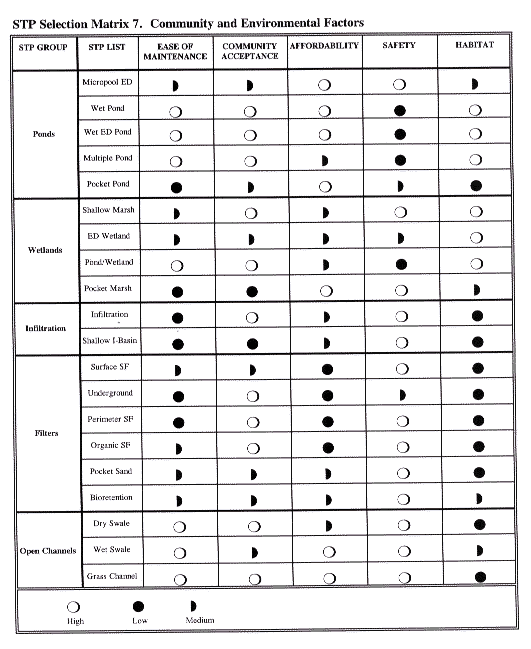
Step 7. Community and Environmental Factors
The last step assesses community and environmental factors involved in STP selection. This matrix employs a comparative index approach. An open circle indicates that the STP has a high benefit and a dark circle indicates that the particular STP has a low benefit.
Maintenance. This column assesses the relative maintenance effort needed for an STP, in terms of three criteria: frequency of scheduled maintenance, chronic maintenance problems (such as clogging) and reported failure rates. It should be noted that all STPs require routine inspection and maintenance.
Community Acceptance. This column assesses community acceptance, as measured by three factors: market and preference surveys, reported nuisance problems, and visual orientation (i.e., is it prominently located or is it in a discrete underground location). It should be noted that a low rank can often be improved by a better landscaping plan.
Affordability. The STPs are ranked according to their relative construction cost per impervious acre treated. These costs exclude design, land aquisition, and other costs.
Safety. A comparative index that expresses the relative safety of an STP. An open circle indicates a safe STP, while a darkened circle indicates deep pools may create potential safety risks. The safety factor is included at this stage of the screening process because liability and safety are of paramount concern in many residential settings.
Habitat. STPs are evaluated on their ability to provide wildlife or wetland habitat, assuming that an effort is made to landscape them appropriately. Objective criteria include size, water features, wetland features and vegetative cover of the STP and its buffer.
The choice for values within this matrix is subjective. Communities may use different values, based on local experience.
